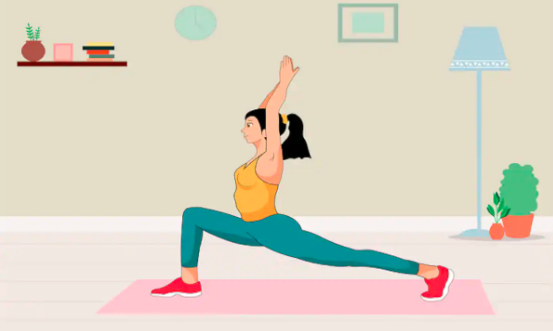[ad_1]
Table of Contents
Latest Exercise & Fitness News
 By Alan Mozes HealthDay Reporter
By Alan Mozes HealthDay Reporter
TUESDAY, Nov. 17, 2020 (HealthDay News)
In the face of pandemic-mandated gym closings and significant limits on movement outside the home, a new survey suggests that Americans are spending more time exercising while dialing back the intensity of their workouts.
The survey of nearly 900 Americans across the country, conducted between May and June, used as its benchmark World Health Organization (WHO) recommendations that all adults between 18 and 64 get a minimum of 150 minutes of moderate-intensity exercise a week.
“The COVID-19 restrictions imposed early in the pandemic created a unique, unprecedented environment, including restricted access to resources and, in some cases, increased unstructured time,” said study author Mary Stenson, an associate professor of exercise science and sport studies at College of Saint Benedict/Saint John’s University in St. Joseph, Minn. “We were curious how these changes might impact physical activity patterns in the U.S. during the shutdowns, but also if these shifts would remain in the long term.”
In Stenson’s study, more than 85% of those polled were women and nearly 90% were white, with an average age of almost 39.
The findings: By June, just over 60% of those surveyed said they were meeting the WHO threshold, representing a nearly 8% jump from pre-pandemic routines. Investigators also found a more than 11% jump in the number of people who were actually exceeding that threshold.
The number of days per week spent exercising also went up notably, from 3.75 days to more than 4.25 days.
Time spent per exercise session, however, stayed more or less stable, at just under an hour. And exercise intensity decreased “significantly,” the researchers found, with respondents attributing the drop to an inability to access gym equipment and classes and a shift to more outdoor walking.
“The increased activity and lower intensity were in line with what we expected,” said Stenson, who said the findings likely reflect the loss of performance “accountability” that comes with the cancellation of group exercise, organized sports and trainer sessions.
But Stenson said she was surprised by an additional observation that nearly three-quarters of those surveyed said they were likely or very likely to stick with their pandemic exercise habits post-pandemic. And nearly 94% of those who had increased their activity levels since March said they planned to continue with their new routines over the coming year.
“We hope to find this is true next spring when we follow up,” said Stenson. The plan is to re-survey the same people next June. In the meantime, she said her team is “hopeful that some individuals realized how much they can be active with limited resources, and that they will maintain their increased activity in the coming months.”
That thought was seconded by Dr. Beatrice Alexandra Golomb, a professor of medicine with the University of California San Diego’s School of Medicine.
“Fitness is tied to better health outcomes, and fewer COVID high-risk factors like hypertension [high blood pressure], obesity and diabetes,” said Golomb, who wasn’t part of the study. “Thus, exercise in the time of COVID remains important.”
“[And] it is a time of opportunity to discover new ways to exercise,” Golomb added. “There are a plethora of online exercise video options, possible parks or trails to investigate, and creative ways to repurpose your home or apartment. Chair, beds, the floor or vacuum cleaners can be conscripted for use. Remember: any movement is better than no movement.”
That becomes all the more important during a time of increased eating and sedentary behavior, said Lona Sandon, program director of the Department of Clinical Nutrition in the School of Health Professions at UT Southwestern Medical Center in Dallas.
“I know from my own experience,” said Sandon, who had no part in the study. “I sit more during the day when working at home. When I am in the office, I move around a lot more, get up out of my desk to talk to people at the other end of the hall, [and] run up the stairs to do something in the lab.”
And because what you eat is as important as exercise, Sandon has some advice: “Think realistically about calorie balance. We tend to underestimate the calories we eat and overestimate the calories we use. If over the past five or six months your clothes have been tightening, take a look at where you might be getting a few extra calories. Are you eating more desserts than you used too? Are you having a few more beers or glasses of wine? Or simply eating out of boredom or stress and depression?”
QUESTION
Walking can maintain your body weight and lower many health risks. True or false?
See Answer
Stenson and her colleagues presented their findings last week at the virtual annual meeting of the American Physiological Society. Research presented at meetings are considered preliminary until published in a peer-reviewed journal.
More information
There’s more information on the WHO exercise recommendations at World Health Organization.
SOURCES: Mary Stenson, PhD, associate professor, exercise science and sport studies, College of Saint Benedict/Saint John’s University, St. Joseph, Minn.; Lona Sandon, PhD, RDN, LD, program director, associate professor, Department of Clinical Nutrition, School of Health Professions, University Texas Southwestern Medical Center, Dallas; Beatrice Alexandra Golomb, MD, PhD, professor, medicine, Department of Medicine, University of California, San Diego School of Medicine; American Physiological Society’s Integrative Physiology of Exercise virtual meeting, Nov. 9-13, 2020

Copyright © 2020 HealthDay. All rights reserved.
From 
Health Solutions From Our Sponsors
[ad_2]













